The Wingshooting Schools of England, Part 2: West London Shooting School
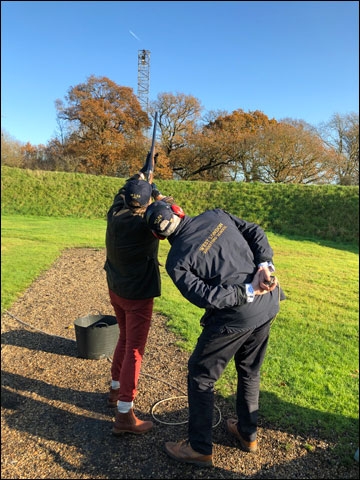
We climbed the narrow staircase from the bustling reception area of the West London Shooting School to the Stanbury Restaurant, where Kevin Phillips is at a table waiting for us.
It’s apparent that the waitress knows Mr. Phillips quite well. As Owner and Director of Sportarm, named the Best UK Gun Room for an unprecedented six times at the Shooting Industry Awards, he’s been working late into the night on the finishing touches of his third Sportarm in the adjacent old brick store. Christmas is 27 days away.
In late November 2019, when upland fever runs high, Shotgun Life opted for a contrarian trip to the outskirts of London for stops at arguably the best clays grounds in the world. The experience was a revelation. While American sporting clays has gradually deviated from its origins as off-season wingshooting practice, English shooting grounds remain devoutly steadfast in their mission of providing simulated wingshooting and instructions. Despite the proximity to London, the shooting grounds are surprisingly pastoral, sprawling and, of course, suffused with British tradition. Our trip encompassed James Purdey & Sons’ Royal Berkshire Shooting School, West London Shooting School, E.J. Churchill Shooting Grounds, Holland & Holland Shooting Grounds and Atkin Grant & Lang. Join us now…
The Wingshooting Schools of England, Part 2: West London Shooting School
Written by Irwin Greenstein
We climbed the narrow staircase from the bustling reception area of the West London Shooting School to the Stanbury Restaurant, where Kevin Phillips is at a table waiting for us.
It’s apparent that the waitress knows Mr. Phillips quite well. As Owner and Director of Sportarm, named the Best UK Gun Room for an unprecedented six times at the Shooting Industry Awards, he’s been working late into the night on the finishing touches of his third Sportarm in the adjacent old brick store. Christmas is 27 days away.
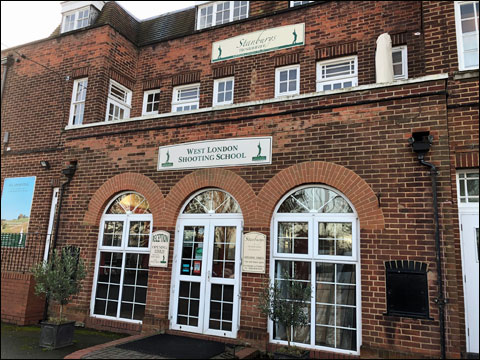 Welcome to the West London Shooting School.
Welcome to the West London Shooting School.With a stylish part in his silver hair, he wears a fleece vest, pink button-down shirt and khakis. He personifies the luxury gun trade serving the millionaires and billionaires of London only 12 miles away. But this guy is no prima-donna. He actually designed, built and installed the new gun showcases, using his own tools, to meet his exacting specifications for lighting and elegance.
His commitment to perfection comes as no surprise. I’d first met Mr. Phillips in February 2016 at the Game Fair & Sporting Weekend at the Orvis Sandanona shooting grounds in Millbrook, New York. We shot a few stations with the fantastic Boss-inspired Ribless Perazzi Game Gun that he designed (see the Shotgun Life story at https://www.shotgunlife.com/kuq3).
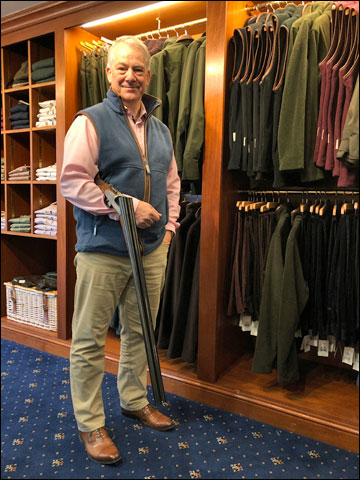 Kevin Phillips in the Sportarm store at the West London Shooting School.
Kevin Phillips in the Sportarm store at the West London Shooting School.At the time, he explained that product development has supplemented strategic growth in the fine shotgun market. And now, after opening their original Dorset store in 1988, followed by the 2016 opening of the Sportarm at Lady’s Wood Shooting School in South Gloucestershire, the innovative Mr. Phillips is at it again with Sportarm at the West London Shooting School.
Mr. Phillips’ latest retail venture is in response to the nouveau wealth that flocks to the West London Shooting School. This is where the best in British shooting traditions gets a nip and tuck to accommodate the self-styled princes of 24/7 global free enterprise who can drop in for a lesson via helicopter “for stress relief,” as Mr. Phillips described it.
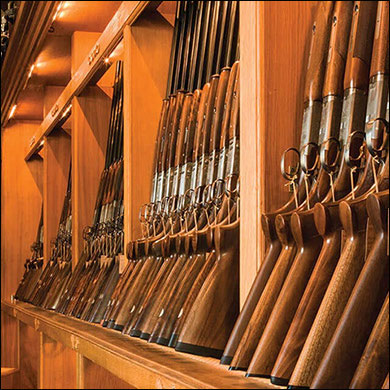 Some of the shotguns available in the West London Shooting School Sportarm store.
Some of the shotguns available in the West London Shooting School Sportarm store.“We’ve always just focused on the customer regardless of cost,” he explained. “Without that level of excellence, we couldn’t open this shop.”
Prior, the West London Shooting School ran its own retail. Mr. Phillips knew that their gun inventory and accessories weren’t strong enough for the London tsunami of new money. “Their retail arms weren’t quite hitting the spot,” he said of the previous tenants. “It’s not what they were doing was bad; it was not an organic position.”
He points out that, although prior management displayed about 100 guns, of which 10 could be the same, Sportarm keeps an inventory of some 400 shotguns and rifles from Purdey, Holland & Holland, Perazzi, Boss, Beretta, Browning, AYA and many more.
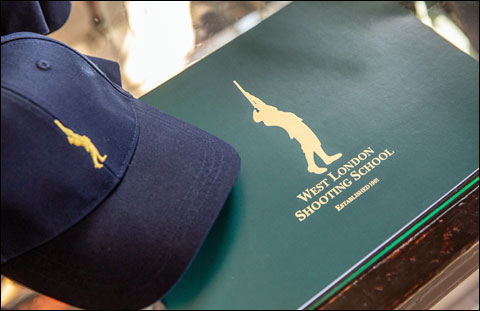 The West London Shooting School logo on the ball cap and brochure illustrate the perfect Stanbury shooting technique. If only it were that easy.
The West London Shooting School logo on the ball cap and brochure illustrate the perfect Stanbury shooting technique. If only it were that easy.Mr. Phillips will also tell you that Sportarm has the most prestigious collection of pre-owned English shotguns of its kind in the UK – backed up by their own London-trained gunsmiths.
Want to look great in the field? Sportarm has you covered with clothing from Barbour, Schöffel, Dubarry, Fairfax & Favor, Le Chameau and Alan Paine.
“The enthusiasm and level of interest for our new shop is phenomenal,” he said. “We came here with the view of making it a destination of excellence, like the shooting grounds itself.”
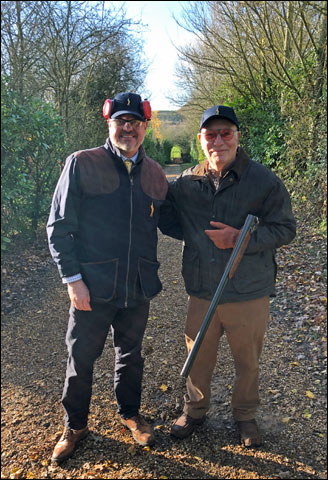 Andy Rowell (left) with the author at the West London Shooting School.
Andy Rowell (left) with the author at the West London Shooting School.In the shop, Mr. Phillips introduced us to Andy Rowell, who joined Sportarm as Gun Room Manager after instructing at the West London Shooting School. Mr. Rowell was gung-ho to teach us the finer points of the school’s Percy Stanbury shooting method that originated here.
Mr. Stanbury’s technique made him a popular instructor. After serving in World War II as a shotgun instructor teaching RAF gunners and pilots how to shoot moving targets, he joined the West London Shooting School in 1947 and worked there until his retirement in 1970. He co-authored with Gordon Carlisle three books during his tenure: Shotgun Marksmanship (1962), Clay Pigeon Marksmanship (1964) and Shotgun Shooter (1970). He was a successful competitive shooter as well, taking at least 18 British titles with the Webley & Scott 400 side by side that he used exclusively on birds and clays – making him a celebrity shooter of the day.
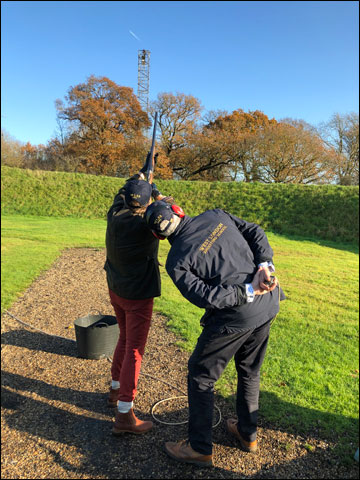 Shotgun Life Editor Deborah McKown trying to master the Stanbury technique with the help of Andy Rowell on one of the high-tower incoming presentations.
Shotgun Life Editor Deborah McKown trying to master the Stanbury technique with the help of Andy Rowell on one of the high-tower incoming presentations.The Stanbury Method advanced the art of shooting high driven birds. He saw that when shooting skyward at pheasant, for example, most people arched their back, lifted their front foot, shifted weight to the rear foot and craned their neck – causing the head-lifting from the stock and loss of balance that would almost guarantee a miss.
Mr. Stanbury thought better. Working with the school’s founder Richmond Watson, they determined that, contrary to popular wisdom, body weight should be on the front foot with the body at a slight forward angle. Feet are six-to-nine inches apart. The hips are forward and the rear heel raised a bit during the weight transference when starting to engage the high bird in a sweeping overhead shot. This address position requires a straight line from the front shoulder, down to the front hip, that continues to the ball of the lead foot. Ultimately, you’re constantly moving to face the target.
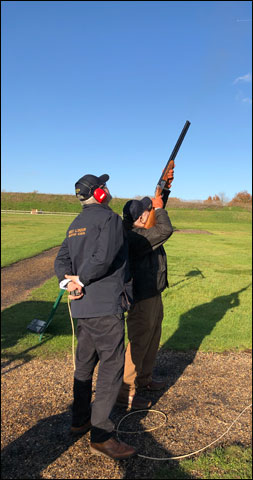 The author giving the Stanbury technique a mighty attempt under the supervision of Andy Rowell at the West London Shooting School.
The author giving the Stanbury technique a mighty attempt under the supervision of Andy Rowell at the West London Shooting School.When drawn fully upward, the position is ballet-like, and a silhouette of a shooter in the perfect Stanbury stance is the school’s logo. Forgot what the Stanbury technique looks like? Just take off your West London Shooting School ball cap and look at the crown.
We started at the Big Table in the school’s reception area called The Lodge. The sturdy Big Table (aptly named at 13 feet by 5 feet) was a hub of activity as people changed out shotguns and equipment.
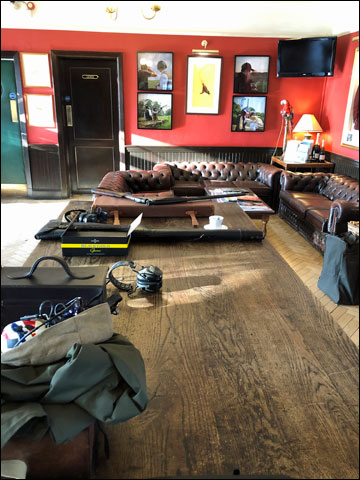 The Big Table in The Lodge area of the West London Shooting School.
The Big Table in The Lodge area of the West London Shooting School.Mr. Rowell returned from the school’s gun room with a pair of Beretta 690 over/unders. Geared up in The Lodge, we were about to find out how challenging it would be for a South Georgia sporting clays shooter and quail hunter fed a steady diet of quartering targets to become an acolyte of Mr. Stanbury.
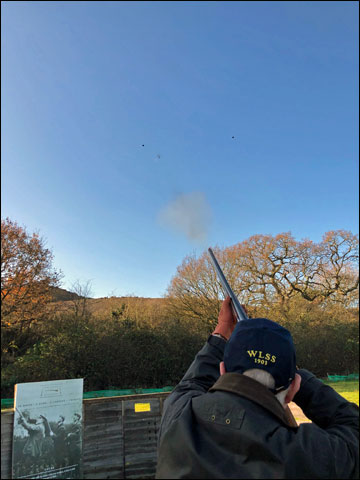 The author in a grouse butt at the West London Shooting School.
The author in a grouse butt at the West London Shooting School.It wasn’t until leaving through the rear doors that we realized the breadth of the West London Shooting School. Although the school was started in 1901, it moved in the 1930s with the brick estate house dating from that period. From the rear patio you could see the 100-acre expanse of manicured lawns, berms and hills, trees and shooting stations positioned far apart from each other – with a few very high clays towers protruding into the sky.
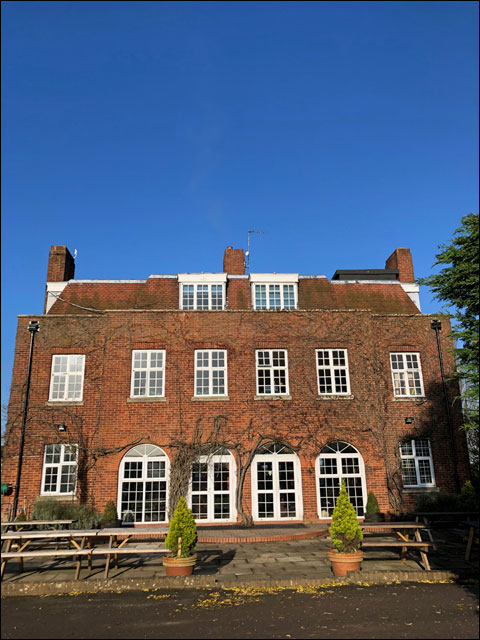 The back of the West London Shooting School.
The back of the West London Shooting School.Our 100-target session would start in a grouse butt in the basic grouse course (the school also has an advanced grouse course). Five trap machines threw simultaneous targets at 55 miles per hour. “We try to create a little chaos for you,” he joked, as though I was entering an F-35 flight simulator.
It was here that he taught us the “slide mount” where you see the bird and slide the gun into the line of the target. “Everything is moving at the same time,” he said. “On the straight birds, you block it out, shoot it.”
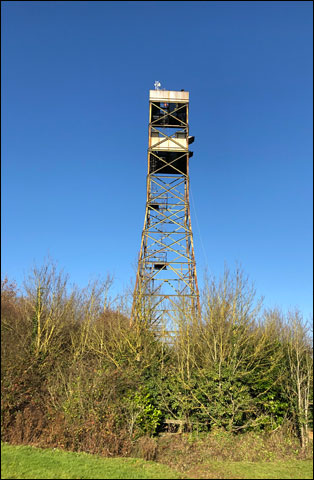 One of the very high towers used to teach Stanbury technique for driven shooting.
One of the very high towers used to teach Stanbury technique for driven shooting.After several variations of grouse butt shooting, we moved on to a couple of high driven pheasant towers of 100-plus feet. Throughout, he tried like the Dickens to teach me the Stanbury method. He would offer advice like “let your hunter’s heart tell you when to pull the trigger,” or “move the gun until you see the bird under the barrel.”
Through no fault of Mr. Rowell, I simply could not get coordinated enough to time the target and find my body groove to synch everything in a smooth and graceful manner. That didn’t prevent us, though, from doing lots of laughing.
Irwin Greenstein is the publisher of Shotgun Life. You can reach him at contact@shotgunlife.com
Useful resources:
The West London Shooting School web site
In Shotgun Life:
The Wingshooting Schools of England, Part 1: James Purdey & Sons’ Royal Berkshire Shooting School

Irwin Greenstein is Publisher of Shotgun Life. Please send your comments to letters@shotgunlife.com.


Comments